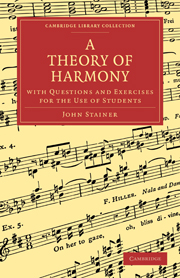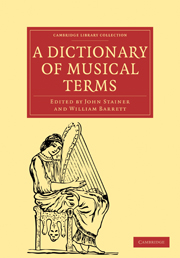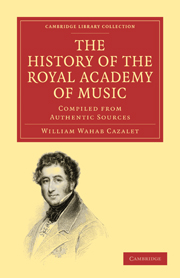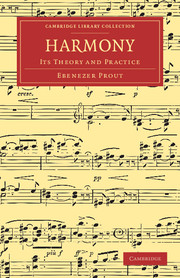A Theory of Harmony
The British composer John Stainer (1840–1901) was organist at St Paul's Cathedral from 1872 to 1888, and in 1889 became Professor of Music at Oxford. In this third edition of A Theory of Harmony he ceased to call it a theory founded on the tempered scale, as he had previously. He wrote in the Preface that he now believed the theory to be perfectly applicable to the system of just intonation. A further reason, in his view, was that the attitude of scientific men toward modern chromatic music had recently improved, as they could see that their system would never be adopted as long as it threatened the existence of a single masterpiece of musical literature. However, the system would be accepted when it rendered such works capable of more perfect performance. This influential Victorian textbook is now reissued for the benefit of those interested in nineteenth-century composition and analysis.
Product details
September 2009Paperback
9781108001878
276 pages
216 × 140 × 16 mm
0.35kg
Available
Table of Contents
- 1. Difference between sound and noise
- 2. Natural recognition of the interval of an octave
- 3. The material of harmony
- 4. Scale arranged in thirds
- 5. Dominant series of chords from major scale
- 6. Chords formed by combination of thirds from minor scale
- 7. Dominant series of chords formed from minor scale
- 8. Chords formed by a combination of notes taken from two scales
- 9. Relative chords are derived from the scale
- 10. Definition of a discord
- 11. Three facts accounting for many musical effects
- 12. Modulation
- Conclusion
- Appendix I Suggestions as to writing music
- Appendix II Suggestions as to filling up exercises
- Appendix III Figured bass
- Exercises, questions and index.






